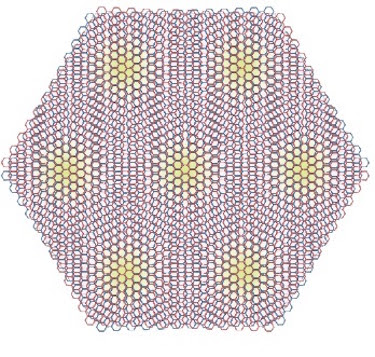 |
| Magic angle graphene superlattice. Scale=10 nm. Courtesy: P Jarillo-Herrero |
Topics: Ferromagnetism, Graphene, Hall Effect, Magnetic Resonance Imaging, Nanotechnology
Researchers have found that electrons organize themselves into a new kind of ferromagnet in twisted bilayer graphene (TBG). In this system, which forms when two sheets of graphene are stacked on top of one another with a small twist angle between them, it is the orbital motion of electrons, rather than their spins, that aligns. Such behavior could produce emergent topological states that might be exploited in applications such as low-power magnetic memory in the future.
Graphene is a flat crystal of carbon just one atom thick. When two sheets of the material are placed on top of each other and misaligned by rotating them relative to each other, they form a moiré pattern. Last year, researchers at the Massachusetts Institute of Technology (MIT) found that at a “magic” twist angle of 1.1°, the material becomes a superconductor (that is, it can carry currents with no losses) at 1.7 K. This effect, which occurs thanks to miniband flattening at this angle that strongly enhances interactions between electrons in the material, disappears at slightly larger or smaller angle twists.
A team of researchers led by David Goldhaber-Gordon of Stanford University has now found unambiguous evidence of ferromagnetism – as the giant anomalous Hall (AH) effect – in TBG when its flat conduction miniband is three-quarters filled.
Ferromagnetism appears in twisted bilayer graphene, Belle Dumé, Physics World
Comments